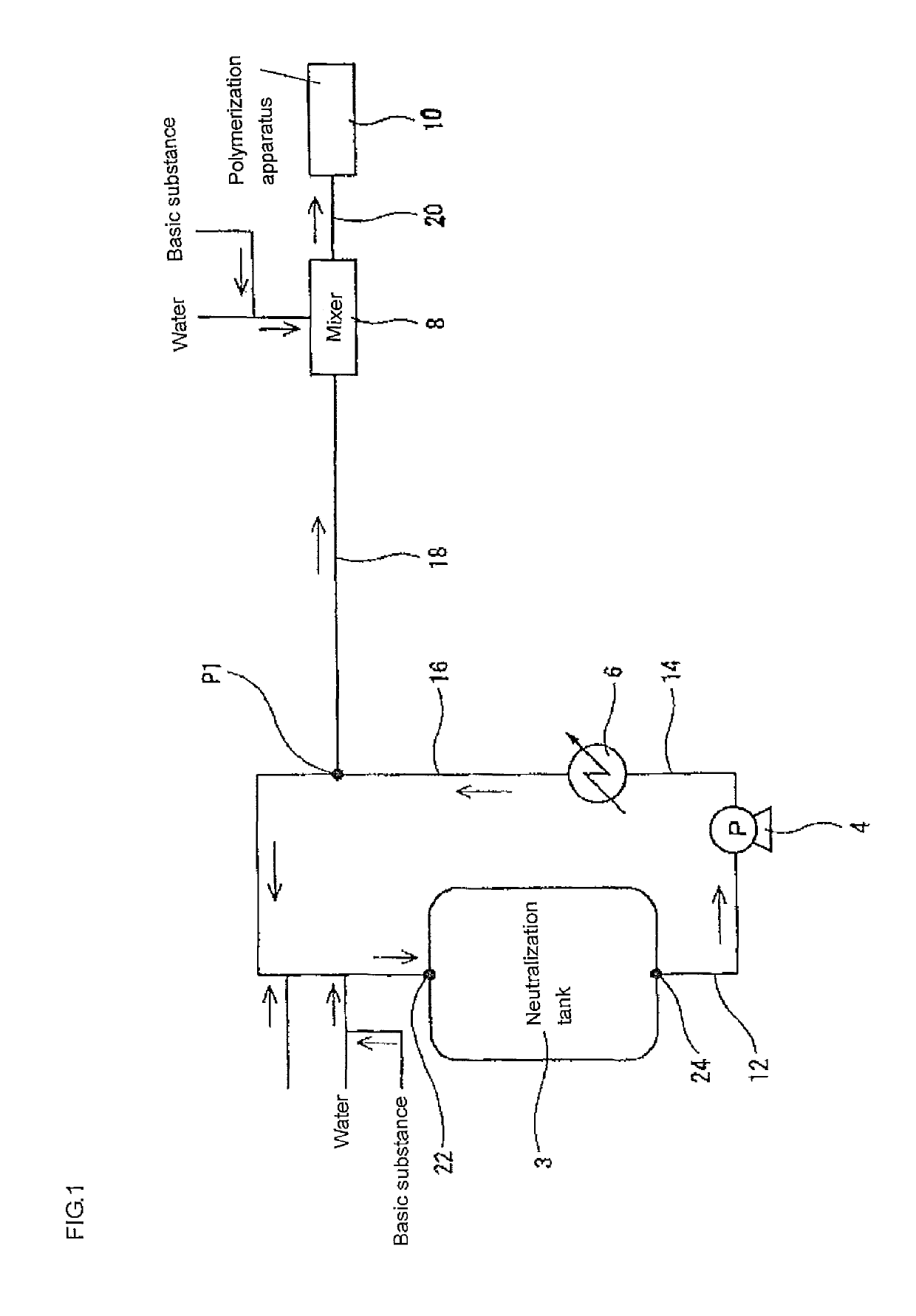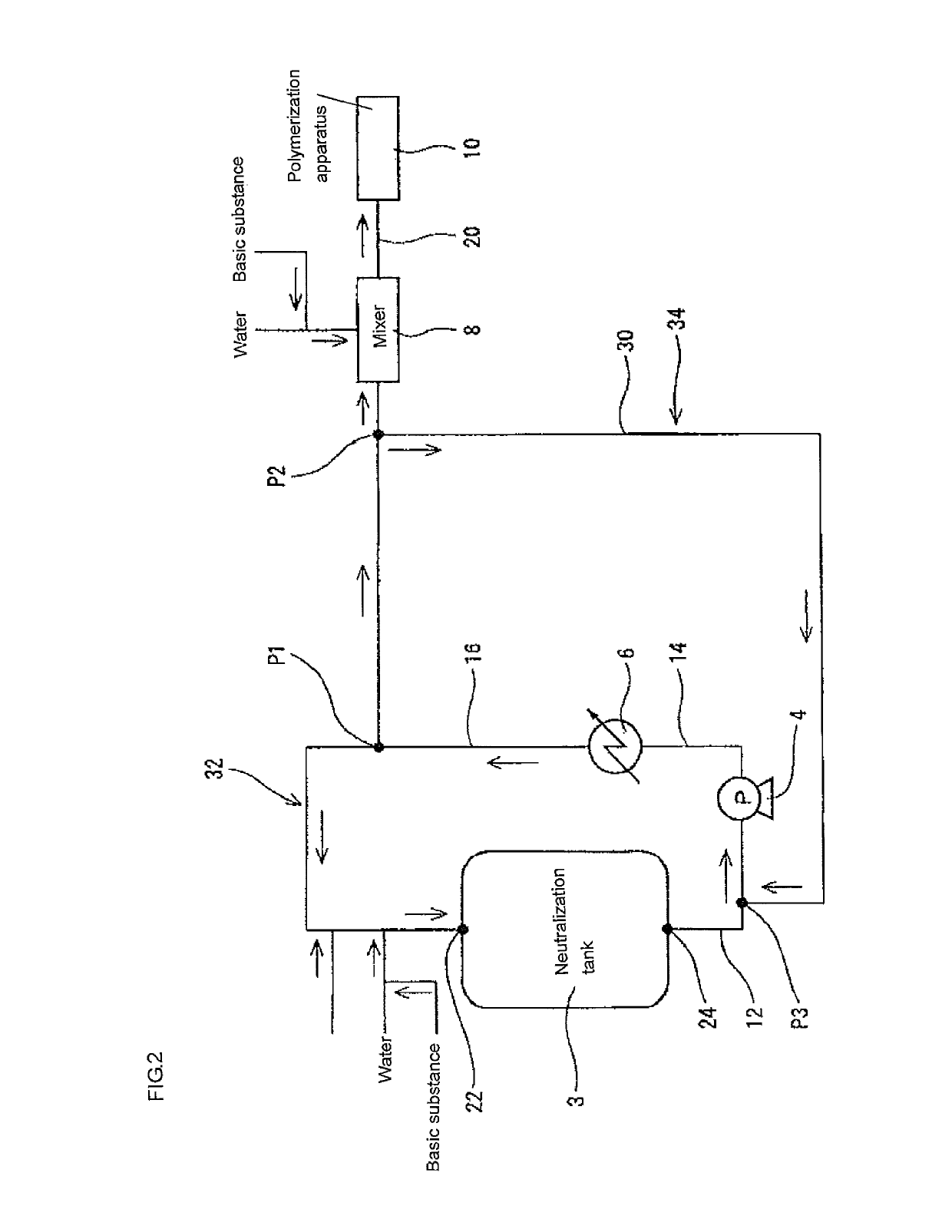Polyacrylic acid (salt)-based water absorbent resin and method for producing same
a technology of polyacrylic acid and water absorbent resin, which is applied in the direction of synthetic resin layered products, organic chemistry, transportation and packaging, etc., can solve the problems of increasing production costs, affecting the practical use of water absorbers such as disposable diapers, and reducing the performance of water absorbent resins when put to practical use, etc., to achieve excellent coloring prevention performance over time, no odor, and suitable for practical use
- Summary
- Abstract
- Description
- Claims
- Application Information
AI Technical Summary
Benefits of technology
Problems solved by technology
Method used
Image
Examples
example 1-1
[0408]When the water content in acrylic acid (AA1-1) purified with a crystallization method was measured by a Karl Fischer method moisture meter (available from Mitsubishi Chemical Analytech Co., Ltd., type KF-200), the result was 64 ppm. The acrylic acid was stored in a circulation-type tank at normal temperature for one week. In this connection, the filling rate of the tank was 75% by volume at this time.
[0409]A solution was prepared by mixing 35.2 parts by mass of the acrylic acid (AA1-1), in which the p-methoxyphenol content was adjusted to 70 ppm and the water content was 64 ppm; 29.4 parts by mass of a 48% by mass aqueous solution of sodium hydroxide; 0.23 parts by mass of polyethylene glycol diacrylate (an average number of n was 9); 0.22 parts by mass of a 1% by mass aqueous solution of trisodium diethylenetriamine pentaacetate (abbreviated as DTPA.3Na); and 33.6 parts by mass of deionized water. Then, 1.38 parts by mass of a 4% by mass aqueous solution of sodium persulfate ...
example 1-2
[0412]A surface-crosslinked particulate water absorbent resin (SAP 1-2) was obtained by the same operations as described in Example 1-1, except that acrylic acid (AA 1-2) was used in which the water content was adjusted to 291 ppm by adding water to the acrylic acid (AA 1-1) in Example 1-1. The initial color and the color over time of the obtained particulate water absorbent resin (SAP 1-2) are shown in Table 1.
example 1-3
[0413]A surface-crosslinked particulate water absorbent resin (SAP 1-3) was obtained by the same operations as described in Example 1-1, except that acrylic acid (AA 1-3) was used in which the water content was adjusted to 594 ppm by adding water to the acrylic acid (AA 1-1) in Example 1-1. The initial color and the color over time of the obtained particulate water absorbent resin (SAP 1-3) are shown in Table 1.
PUM
| Property | Measurement | Unit |
|---|---|---|
| water content | aaaaa | aaaaa |
| melting point | aaaaa | aaaaa |
| boiling point | aaaaa | aaaaa |
Abstract
Description
Claims
Application Information
 Login to View More
Login to View More - R&D
- Intellectual Property
- Life Sciences
- Materials
- Tech Scout
- Unparalleled Data Quality
- Higher Quality Content
- 60% Fewer Hallucinations
Browse by: Latest US Patents, China's latest patents, Technical Efficacy Thesaurus, Application Domain, Technology Topic, Popular Technical Reports.
© 2025 PatSnap. All rights reserved.Legal|Privacy policy|Modern Slavery Act Transparency Statement|Sitemap|About US| Contact US: help@patsnap.com


